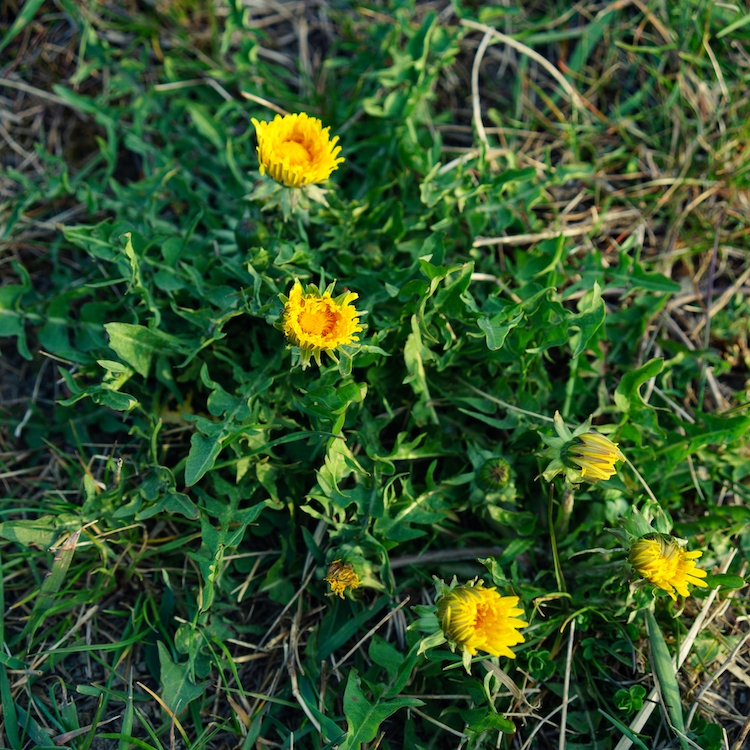When you walk though your neighborhood, you’ll notice the some lawns are nothing but a carpet of lush and green grass while others seem to have a potpourri of plants living among the grass. What are these uninvited guests in your lawn? Dictionary.com defines a weed as “any undesirable or troublesome plant, especially one that grows profusely where it is not wanted.” So, technically, weeds could be a mint plant that grew out of control or a sunflower that grew from a seed that a passing bird dropped. For this article, we’ll focus on what most people consider to be weeds in their lawn. Understanding the common weed varieties found in San Antonio, their life cycles, and how they reproduce is the first step to effectively controlling them.
How Unwanted Guests Take Root

Weeds have developed various strategies for spreading and establishing themselves in your lawn. The seed is the most common way weeds propagate. Many weeds produce prolific amounts of seeds that can easily disperse through wind, animals and birds, or even by sticking to clothing or shoes. These seeds can lie dormant in the soil for extended periods, waiting for the right conditions to germinate.

Some weeds spread through root systems and rhizomes. Weeds like Dollar Weed (pennywort, a perennial) can sprout new shoots at various points, spreading quickly and creating a difficult-to-eradicate network. These weeds are often difficult to control once it becomes well established. Certain weeds like crabgrass and dallisgrass can regrow from stem fragments left behind after pulling or mowing.
The Weed Life Cycle
Understanding an individual weed’s life cycle gives you insight on an effective approach to control the pesky plant. Like all other plants, weeds follow a pattern of 5 stages: Seed Germination, Seedling, Vegetative Growth, Reproduction, and Dispersal.
Weed seeds germinate under specific conditions, such as adequate moisture and warm soil temperatures. The young weed plant emerges and begins to develop leaves. This is a crucial stage for control, as young seedlings are more susceptible to weed control methods. The weed matures, developing leaves, stems, and roots. The mature weed produces seeds or propagates through other methods, ensuring its survival and spread. Seeds are then released and dispersed, ready to germinate and begin the cycle anew.
Common Weed Seen in San Antonio Lawns
San Antonio’s warm climate and diverse soil types provide a haven for a variety of weeds. These weeds fall into two general categories: Broadleaf and Grassy.
Broadleaf Weeds are flat-leaved weeds that compete with your grass for nutrients and sunlight. Dandelion plants are easily recognizable with its bright yellow flowers and fluffy seed heads, dandelions are a persistent broadleaf weed. While some varieties of clover like purslane can be beneficial for nitrogen fixation, most homeowners consider clover a weed due to its ability to spread quickly. Chickweed is a low-growing, fast-spreading weed thrives in cool, moist conditions.



Grassy Weeds look like your lawn grass but can be more aggressive and crowd out your preferred turf. If not controlled, crabgrass can overtake your yard. This annual grassy weed germinates in warm weather and spreads quickly through sprawling stems and prolific seed production. Dallisgrass is a clumping perennial grassy weed forms dense patches that can be difficult to control. While Bermuda grass is a popular warm-season lawn grass found through San Antonio, it can become invasive. It’s not unusual to find your neighbor’s Bermuda grass creeping into your Zoysia or St. Augustine lawn.
Winning the Battle Against Weeds
The most effective approach to weed control is integrated weed management (IWM). This approach combines various strategies to create a holistic weed control program: Prevention, Aeration, Manual Removal, and Organic Herbicides.
Prevention is the maintenance of a healthy lawn. When you tend to your lawn with proper watering, mowing, and fertilization, you will create an environment less hospitable to weeds and more favorable for your grass. Aerating your lawn will improve drainage and root growth, which can help your grass compete more effectively with weeds. For small infestations, hand-pulling weeds is a simple and practical solution. Be sure to remove the entire root system to prevent regrowth. Organic herbicides like corn gluten meal or vinegar are not only an eco-friendly option for targeted weed control; they are not as detrimental as chemical herbicides.
Summary
Weeds can be a constant battle for any homeowner, but fear not! By understanding their life cycles and how they spread, you gain the upper hand. Embrace a proactive approach with a combination of preventive measures and eco-friendly control methods. This empowers you to create a healthy lawn that naturally discourages weeds and eliminate the need for harsh chemicals.
The good news: achieving a beautiful, green space doesn’t require sacrificing the environment. With a little planning and these effective strategies, you can have both! Remember, a healthy lawn is the best defense against weeds. Continue to explore our website on eco-friendly lawn care practices and discover natural weed control solutions to cultivate your dream lawn!
Share your experience below on how you’re handling your nuisance weeds.
Sun Charged Lawn Care offers a variety of eco-friendly lawn care services, including mowing, edging, and trimming. Our equipment is battery powered and recharged using solar powered generators. We can help you create a beautiful and healthy lawn without compromising the environment. Contact us today to schedule your next mow.

